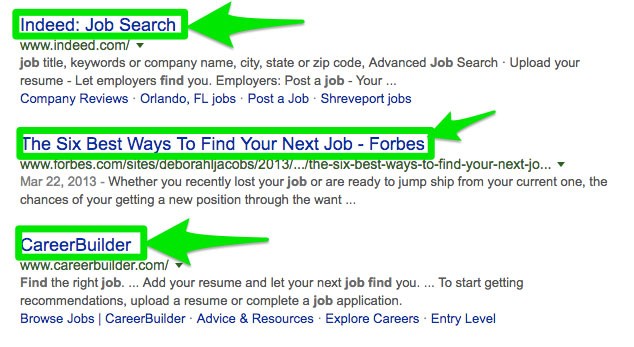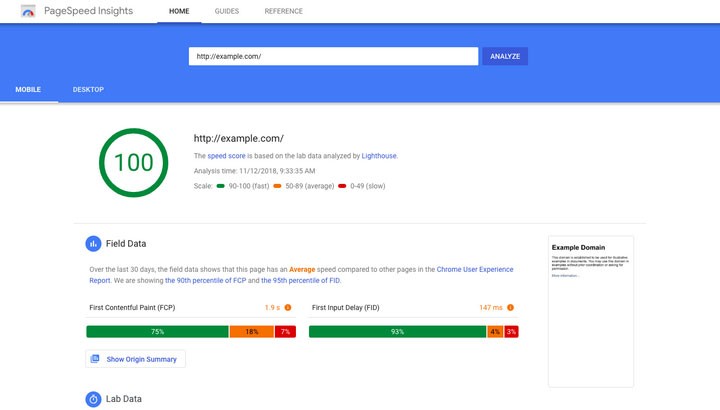Search engine optimization, or SEO for short, is extremely important. If you want your website to be found early on in the search engines results’ pages (SERPs), then you need to know how to do SEO. You might be wondering what exactly is SEO and how it works, as well as how do you do it. Let’s go over everything you need to know about search engine optimization.
What Is SEO And How It Works
Before you know how it works, you’ll want to learn more about SEO definition.
SEO Definition: As previously mentioned, SEO is short for search engine optimization. Search engine optimization is a set of processes or methods that you use to optimize your website. The main goal of search engine optimization is to get your website to rank in the search results in order to generate free traffic, or organic traffic.
When it comes to search engine optimization Google and other search engines have many ranking factors. The search engines, especially Google, consider a number of things when they decide how and where a website will rank. These ranking factors include:
. Back-links
. Mobile friendliness
. Social signals
. Page speed
. Site security
. High quality content
. Keywords
. Domain age
. User engagement
Bear in mind the above are only a handful of factors that Google and others consider when ranking websites.
Now you know the answer to what is SEO and how it works. The bottom line is if you want to generate a lot of traffic to your website, then you should do SEO.
How To Do SEO Yourself
If you’re like many people, then you’re probably wondering how to do SEO for free. The best way is to do it all on your own. Here’s how to do SEO yourself:
You Might Also Like
- Keyword Research
If you’re serious about wanting to know how to do SEO, then you have to do keyword research. Keywords is a major ranking factor, but too many website owners don’t use keywords properly. First and foremost, you need to research keywords that are relevant to your site and/or the articles you’ll be publishing to your site.
There are keyword research tools you can use. These tools can reveal what keywords are popular, how competitive they are and things of that nature. For example here is a tool called Wordtracker:

(Image Credit: Wordtracker)
- Create High Quality Content
You’ll want to create high quality for your website. Different people have different definitions of what high quality content is. In general, your content should provide value to readers and the length of the articles should be around 700 to 1,000 words.
Choose 1-2 keywords to use throughout each article you’re going to publish on your site. Don’t stuff keywords, and try to only use each keyword once or twice per 100-150 words. One more thing, never ever spin articles. All of your website’s content should be unique and not copied from another website.
Test your SEO in 60 seconds!
Diib is one of the best SEO tools in the world. Diib uses the power of big data to help you quickly and easily increase your traffic and rankings. We’ll even let you know if you already deserve to rank higher for certain keywords.
- Easy-to-use automated SEO tool
- Keyword and backlink monitoring + ideas
- Speed, security, + Core Vitals tracking
- Intelligently suggests ideas to improve SEO
- Over 500,000k global members
- Built-in benchmarking and competitor analysis
Used by over 500k companies and organizations:
Syncs with 
- Produce Content Regularly
Doing search engine optimization on your own also requires publishing content regularly. Whether you’re posting articles to your site, videos or a podcast, just make sure you’re doing it regularly.
If your website is brand new, then create content for it 1-3 times per week. As your site ages, you can get away with posting content at least once per week. Content is a huge ranking factor, therefore you want to update your site regularly with new content.
- Link Building
Another aspect of SEO is link building. This is exactly what it sounds like, you build links or create engaging content so people share your website’s link with others. In some of the articles you create for your site, include a link to another article on your site. The article you link to should be relevant to the article/topic that you just wrote about. These types of links are known as internal links.
Inbound links are links that are from external resources. There’s a few things you can do yourself to create these types of links. One way is to make YouTube videos that are relevant to your website’s content, and include a link to your site from your YouTube videos. If you have social media, then share your links with your following.
- Mobile Optimization
More and more internet users are using their mobile devices to access websites. You need to make sure your website can be viewed on all mobile devices, and on various sized screens. There are a number of ways to check if your site is optimized for mobile devices, such as using Google’s Mobile-Friendly Test Tool. For instance:

(Image Credit: Google Support)
Don’t become too stressed out over this. The truth is it is easy to optimize your website for mobile device users. As long as your site can be accessed across all mobile devices and it loads fast, then you should be all set.
- Titles & Subheadings
Use title tags on your website. Title tags lets search engines know what your website’s page/pages are all about. When you create an article for your site, use the HEAD tags. The title of your article will go right between those tags, and they are placed near the HTML code for the web-page in question. The image below shows a couple examples of title tags:

(Image Credit: Unamo)
Also, when using subheadings, include H-tags. H1 tags are title tags, while H2 tags are for subheadings, which is what you want to use. Subheadings. Feel free to use the H3 tags as your subheadings tags.
- Use Social Media
As previously mentioned, social engagement is a ranking factor. Part of your do-it-yourself search engine optimization strategy should involve using social media. As a general rule of thumb, set up a Facebook Page, Twitter account and an Instagram page. All three of your social media profiles should have the same theme. If your website is about fitness, then those three social media profiles should be fitness oriented.
Share your website’s content to your social media profiles on a regular basis. Focus on growing your following too. Eventually others will find your content and profiles. This will increase the chances of your website’s link being shared, and in turn will be good for SEO purposes. Take a look at Diib’s facebook page:

- Content Marketing
Content marketing is another SEO task you can easily do on your own. There’s different types of content marketing. This includes creating a separate blog to your website, and posting to your blog content that is relevant to your main website’s content. You’ll link from your blog’s articles to your main website.
Another form of content marketing is creating YouTube videos and/or Facebook videos. Again, include links from within your videos that lead back to your main website.
Other kinds of content marketing you can do includes creating podcasts, eBooks and lead magnets/lead generation pages. Creating memes with your website’s link in them, and sharing those memes across social media is another popular and unique form of content marketing.
- Images
When you’re using images on your site, make sure you include 1-2 keywords in each image’s description. The reason why you want to have descriptions that have keywords in them is because images can rank in the search results. Not all of your images will be found via Google, but the more optimized photos you have, the better the chances are that some of them will be found.
That is how to do SEO for free. If you focus on quality search engine optimization Google will eventually take notice. It might take awhile before you see results from your SEO efforts, but it is worth putting in the work regularly.
We hope that you found this article useful.
If you want to know more interesting about your site health, get personal recommendations and alerts, scan your website by Diib. It only takes 60 seconds.
How To Do SEO For Website Step By Step
Here’s a few basic steps to follow when doing SEO for a website:
- Choose your domain name. The domain name you choose for your site should contain the main keyword you’re trying to rank for. If this isn’t possible, then choose a domain name that best describes what your website is about. If you currently own a website, then you can skip this step.
- Researching and choosing keywords to include on your website and within your site’s content is the next step. Choose a main keyword to focus on, and include that keyword in various areas of your site, such as within the page’s title, page URL and the page description.
- Creating content is another key step. As previously discussed, you want to create keyword-enriched content.
- Create meta-descriptions when you upload your content. When people find your website in Google’s search results or any search engines’ results pages, then they’ll see the description below the link. This is what’s known as the meta-description. For example:

(Image Credit: Reliablesoft)
- Plan out the structure of your site. Generally speaking, your homepage should be the most important page. Your homepage tab should be shown on the main menu. The main menu should contain other important pages, and right below those pages should be subtopics or subcategories. Important note: you can always change the structure of your site. Just make sure your homepage can easily be found and accessed from anywhere on your site.
That is how to do SEO for website step by step instructions you can follow. There’s a lot involved with optimizing a website, but the above are the basic steps that can get you off on the right foot.
SEO Tools
Search engine optimization tools are tools to assist you with various aspects of SEO. Some tools are designed to help with one specific area of SEO, while other tools are designed to assist with various aspects of SEO.
SEO tools can help you improve your SEO strategy and potentially increase your search engine rankings over a period of time. Here are a few different types of search engine optimization tools you should consider using:
- Keyword Research- Keyword research tools are one of the most important tools you can use for SEO. These tools are used to generate keyword ideas, find keywords based on search volume and competition. Here’s a tip, use a keyword research tool to find keywords that are low in competition and that are long-tailed. A good keyword tool will clearly tell you which keywords are easy to rank for and which keywords are very competitive.
As previously mentioned, the way keyword tools work is simple. You enter a single word (keyword) or several words into the tool. Then you’ll learn more about that exact keyword/keywords. You’ll also be shown additional relevant keywords.
- Link Building- Different link building tools have different features. All link building tools are designed to assist you in building or generating links to your website. For example, many link building tools can be used for outreach purposes. You can use tools to quickly and easily find bloggers, websites and influencers that you can contact to see if they will share your site’s link or if you could guest post on their site.
Also, tracking backlinks can be useful, and many tools let you do that. Furthermore, some link building tools allow you to disavow links from certain sources, such as spammy websites.
The goal of link building tools is to generate high quality links. Remember, it isn’t about quantity, it’s about quality. It’s better to have a handful of high quality backlinks than hundreds of very low quality backlinks.
- Rank Tracking- Rank tracker tools allow you to see how well your website ranks in various search engines. You can check individual pages too. When you know how well your page/pages rank in the SERPs, then you’ll be able to tweak your overall SEO strategy. Plus, some ranking tools give you insights into your competitors. By knowing where they rank for similar content, you can determine what your SEO plan should consist of or where you need to make changes. Ahrefs is one of the rank tracking tools you can use:

(Image Credit:Ahrefs)
- Page Speed Test- You want your website and its pages to load as fast as possible. If you have a lot of elements that slow your site down, such as necessary plugins (if you use WordPress for your website), then your site will ruin the user-experience. In turn, your rankings could potentially be negatively affected.
Page speed test tools are used to test your site’s speed. If content loads slowly, then you can make changes so it loads faster. In turn, your SEO will improve. Take a look at this PageSpeed Insights example:

(Image Credit: Google Developers)
- Technical Tools- There are many technical aspects to a website. Technical tools can help improve these aspects. The best technical tools are capable of auditing on-page search engine optimization issues, as well as analyze pages to see if there is anything that needs to be fixed. If you use a technical tool, try to find one that checks your website’s performance score, as well as checks to see if your site is mobile friendly or not.
- SEO Image Optimizer Tool- As previously discussed, images on your website should be optimized for the search engines. An SEO image optimizer tool automates the process of optimizing images. This includes adding alt tags, descriptions and much more.
There are many tools in the above categories. To be more specific, tools you can try (both paid and free) include:
- Google Keyword Planner
- Google Trends
- SEM Rush
- MOZ
- Ahrefs
- Linkody
- CloudFlare
The list goes on, but any of the above search engine optimization tools are worth trying.
Diib® SEO: Easy to Understand and Implement!
Now you know how to do SEO yourself and what kind of SEO tools are out there. If you currently have a website, then take a good look at it to learn how you can use SEO to help it rank better. If you plan on launching a new site, then build it with SEO in mind right from the start. Partnering with Diib Digital will give you added peace of mind and comfort that things are done right.
Here are some of the features of our user dashboard we’re sure you’ll love:
- Provide Custom Alerts, which keep you informed on your website health and any changes to the google algorithms that can affect your traffic patterns.
- Give Objectives with customized suggestions on ways to improve your website health and organic traffic.
- Offer our clients insights into not only their own website health, but that of their key competitors.
- Allow you to sync your Facebook profile, giving you insights into the specifics of your social media campaign. Things like specific post performance, demographics of users, best time of day to post and conversions.
- Provide a monthly collaborative session with a Diib growth expert that can help you fine tune your SEO efforts and guide you to growth and success.
Call today at 800-303-3510 or click here to get your free 60 website scan and learn more about your SEO strengths and weaknesses.
FAQ’s
We hope that with this comprehensive guide, you’ll know you can do SEO yourself. Keep researching and mastering the basics of keywords, backlinks and providing high quality content and you’re halfway there!
SEO can be done by almost anyone. Being willing to investigate and allocate the necessary time and resources into it, and you’re halfway there.
You don’t need to know coding to be successful at SEO.
SEO is still very much a part of a successful 2021 internet business plan. It is evolving and changing to match industry updates. Google’s 2019 BERT update, for example, really forced SEO experts to zero in on optimizing content with search intent in mind rather than simple keywords.
This will largely depend on the size of your company and your overall marketing goals. This could cost anywhere from $500/month to $10,000/month. A lot of this could be done by yourself, with the right research.



